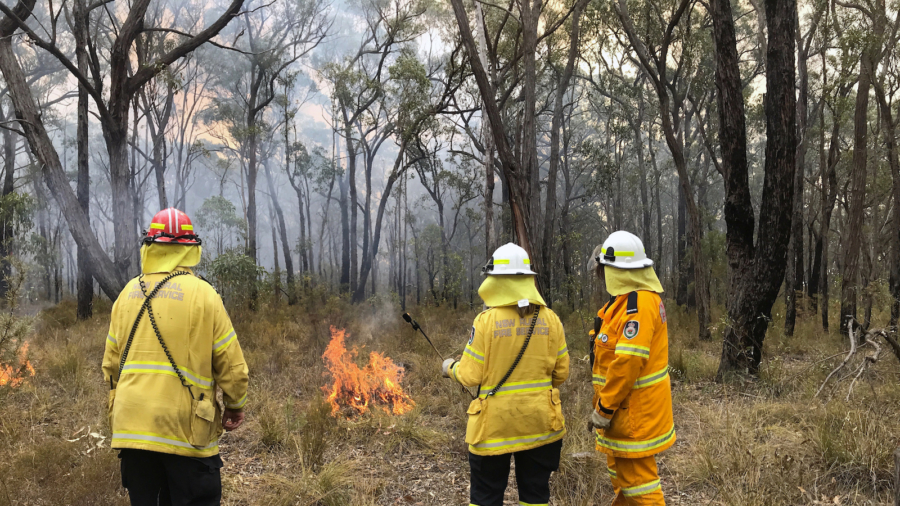A volunteer firefighter has died after a truck rolled in southern New South Wales, Australia.
Two colleagues suffered also burns in the incident near Jingellic, east of Albury.
“It’s believed that the truck rolled when hit by extreme winds,” the RFS posted to social media on Monday evening.
Across the state, 100 fires are burning with four at emergency level and four others subject to watch and act alerts.
More than 40 blazes were uncontained, with authorities warning Tuesday would bring worse conditions.
The largest blaze, at Charleys Forest, which has burnt 34,000 hectares east of Braidwood, was threatening homes west of Nerriga.
Extreme fire danger is forecast for the Southern Ranges, Illawarra and ACT while surrounding regions—including Sydney, the Hunter and the far south coast—are in for severe fire danger.
Total fire bans are also in place for large chunks of eastern and southern NSW, as well as the northern slopes.
Across NSW, more than 900 homes have been destroyed but that number is expected to increase with rising temperatures and dry winds forecast to peak on New Year’s Eve.
Temperatures are forecast to climb past 40 degrees Celcius in western Sydney and parts of regional NSW by Tuesday, as air pollution in the city’s southwest remains at a hazardous level.
Victoria
Meanwhile, fire crews in Victoria are battling catastrophic fire dangers with flames leaping 20 metres into the air and 14 km high smoke columns creating fire-generated thunderstorms.
Multiple emergency alerts have been issued for out-of-control blazes in Victoria’s far east and northeast.
A fire is also threatening lives and homes in Melbourne’s northern suburb of Bundoora, where residents have been told it’s too late to leave.
The worst is yet to come with a dangerous wind change expected to sweep fire grounds across Victoria around midnight on Monday.
The state is now bracing for the potentially ferocious wind change, which could bring gusts up to 120 km/h across East Gippsland into Tuesday morning, the weather bureau has warned.
“It is quite an extreme day for us, really the first really bad day that we’ve had on this group of fires since they started on November 21,” East Gippsland fires incident controller Ben Rankin told reporters at Bairnsdale.
“(It’s) comparable almost to Black Saturday in some ways, if the forecast does eventuate as given to us.”
Earlier, Emergency Management Commissioner Andrew Crisp said firefighters had faced 20 metre high walls of flames generating massive smoke columns.
“It is unpredictable, it’s dangerous out there. A fire that started mid-afternoon moved about 24 km within four or five hours as the wind changed direction,” he said.
“It put up a column, punching into the atmosphere 14km high. These columns are generating their own weather. There’s lightning coming out of these columns.”
Of the more than 30 bushfires burning across the state, 17 started due to dry lightning.
South Australia
In South Australia, catastrophic conditions sparked more than 120 bushfires but the state escaped without major losses on a day that had authorities fearing the worst.
Fires continue to burn on Kangaroo Island and a catastrophic danger has been declared for the Adelaide Metropolitan, Yorke Peninsula, Mount Lofty Ranges and the state’s Mid North.
But there was no reported spread of the major Adelaide Hills fire which was sparked under similar weather conditions 10 days ago.
It remains the largest blaze in SA over recent weeks, with 25,000 hectares burnt and more than 80 homes destroyed.
Tasmania
In Tasmania, residents are urged to remain on high alert as parts of the state sweltered through its hottest December day on record and an out-of-control bushfire in the Central Highlands was upgraded to emergency level.
Authorities are also concerned about the potential for dry lightning strikes with thunderstorms forecast to cross Tasmania in the afternoon and evening.
Wind gusts of up to 90 km/h are predicted when the fire danger is expected to be at its highest.


